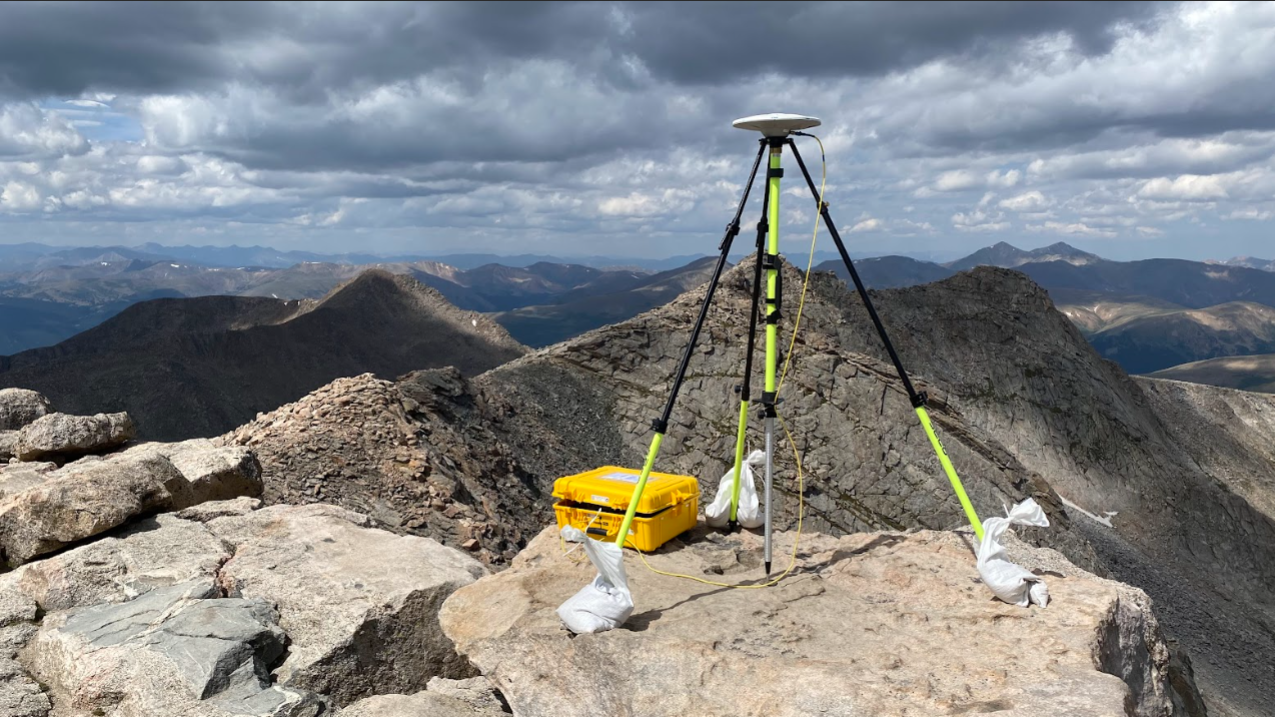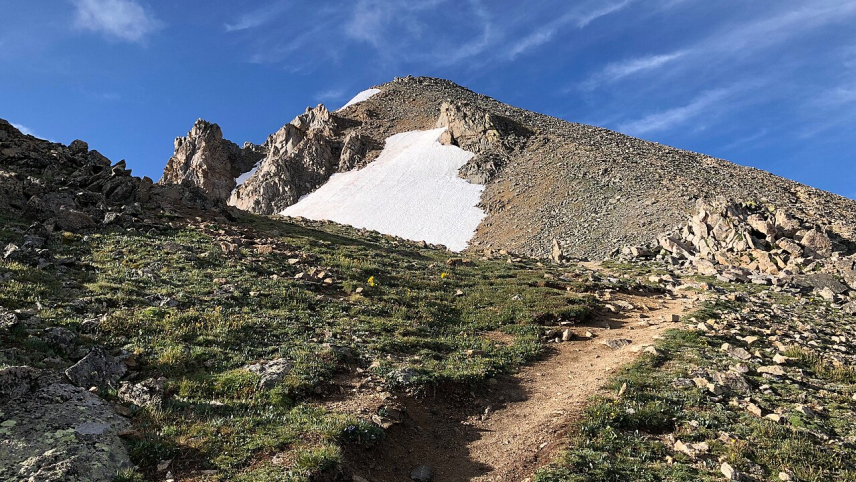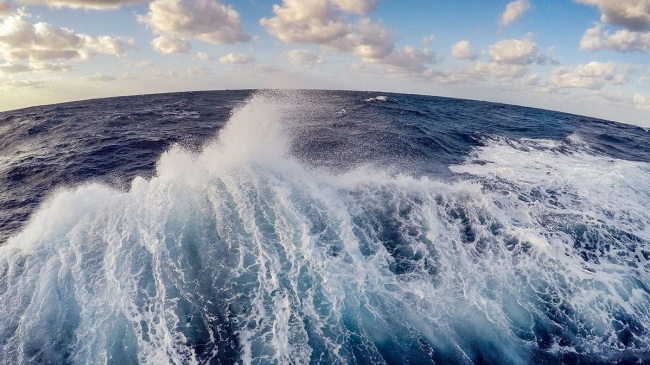Reevaluation of Colorado’s iconic summits is part of a national remapping project

August 23, 2023: A GPS antenna and receiver determine an accurate position and elevation for a geodetic control mark on the top of Mt. Blue Sky, Colorado, elevation 14,266 feet. (Image credit: Brian Shaw/NOAA National Geodetic Survey)
Derek van Westrum, a physicist with NOAA’s National Ocean Service (NOS), didn’t want to be responsible for taking one of Colorado’s beloved “Fourteeners” off the books.
Since 2007, NOS has administered the update of the National Spatial Reference System (NSRS), a massive project to modernize the system for measuring the vertical elevations of the U.S. and its territories.
As part of that work, in 2017, van Westrum and a team of NOAA National Geodetic Survey (NGS) scientists in Colorado realized that the published elevations of the state’s iconic “Fourteeners” — 53 mountain peaks with summits at least 14,000 feet above sea level — were all overestimated by roughly 1 meter.

With the results of their work now published in the Journal of Geodesy offsite link, van Westrum and his team can breathe easy. All 53 Fourteeners retain the title, though Huron Peak is now the lowest peak, claiming Sunshine Peak’s former spot.
“We were quite relieved to find that we didn’t lose any,” van Westrum said. “Coloradans love their Fourteeners. I was pretty sure we were going to get a lot of grief!”
The results have broad implications for all elevations across the nation with the upcoming modernization of the NSRS, which will be the foundation for all surveying and mapping in the U.S. going forward.
It will be revolutionary, like GPS. Having accuracy like this will lead to things we can’t imagine now.
Better, faster, economical and more accurate
As part of the NSRS modernization, NGS scientists recently completed a 16-year-long project to collect airborne gravity data over the entire U.S. and its territories. This data will be used to make accurate height measurement better, faster and more economical. The project, called the Gravity for the Redefinition of the American Vertical Datum, or GRAV-D, uses measurements of Earth’s gravity field to define sea level, even under the continents. When completed, users will be able to get accurate heights to within about an inch for most locations around the nation.
“The elevation of a typical 14er benchmark could be plus or minus a couple feet,” said Kevin Ahlgren, lead author on the new paper. “We get within a few centimeters. It’s like 20 times better.”
Measuring heights will be easier than ever
Not only will height measurements be more accurate, they will be much easier to update and better predict how they may change in the future due to land subsidence or sea level rise. The improved system will be tied into GPS, so it will be easier and faster to get accurate height information.
Better heights = billions saved
A recent study estimated that this update will lead to about $8.7 billion in social and economic benefits over the first 10 years to the U.S. through improved floodplain mapping, coastal resource management, construction, agriculture and emergency evacuation planning.
“It will be revolutionary, like GPS,” said co-author Brian Shaw, NGS’s Rocky Mountain Regional Advisor. “Having accuracy like this will lead to things we can’t imagine now.”
To see the new ranking of Colorado Fourteeners, visit: Moving Mountains: NGS Researchers Reevaluate the Heights of Colorado Mountain Peaks.
To see how coastal regions stand to benefit, see: Biden-Harris Administration shares new land cover data to help communities understand coastal change.



